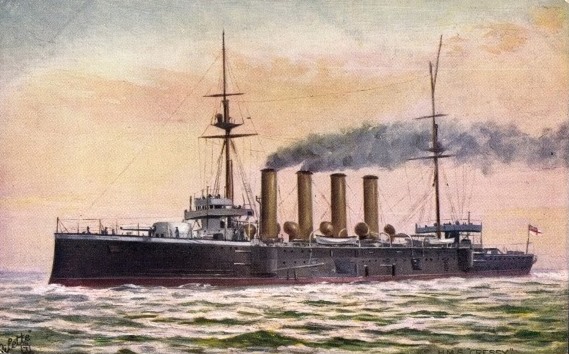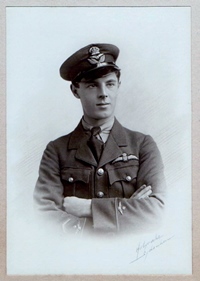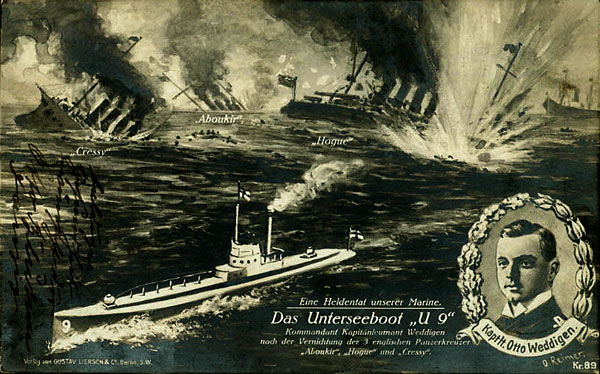


FARNBOROUGH HEROES OF WORLD WAR 1
As the 100th anniversary of the ending of the 1st World War passed, we felt it was important to remember this event in a special way. At our usual Remembrance Day service, names are read out, but unfortunately few personal details are available to enable us to emotionally connect with them more, and thus to fully appreciate the great sacrifice they made.
Ian Fordyce and I have set about unearthing as much information as we could, concerning each of the men whose names are remembered on the Village War memorial. Fortunately, with the help of the internet, we were able to access the 1911 census and several regimental websites, which are mentioned below. Also of help, were a number of local residents whose knowledge of the history of Farnborough was very valuable.
Below are details of a few of these men which might be of interest to readers, with some direct quotes and internet references given.
Three sets of brothers from Farnborough Village died in the Great War.
1. Frederick and Victor Allchorn
2. Eric and Harold Lubbock
3. Ernest and Jack Mussell
“The action of 22 September 1914 was a naval engagement that took place during the First World War, in which three obsolete British Royal Navy cruisers, manned mainly by reservists and sometimes referred to as the "livebait squadron", were sunk by one German submarine while on patrol. Approximately 1,450 sailors were killed, and there was a public outcry at the losses. The incident eroded confidence in the British government and damaged the reputation of the Royal Navy at a time when many countries were still considering which side in the war they might support.”
“I had a long yarn with one of the crew of the Aboukir. He told me that he had just gone off duty and turned into his hammock for an hour or two when he heard the crash of the explosion, and the ship seemed to heave itself up. She immediately listed to starboard. The ship’s company (what was left of them) fell in on the quarter-deck without confusion, according to orders, and waited for the end. Meanwhile the Hogue and Cressy rapidly closed in and stood by to take off the survivors and wounded, the prevailing impression being that the Aboukir had struck a mine. Then, without a moment’s warning, the periscopes of several submarines were seen less than 50 yards away! The two remaining ships stood to their guns, but before a shot was fired three terrific explosions occurred under the Cressy and two under the Hogue. This latter ship, badly hit, keeled over and sank in four minutes, leaving the survivors of the explosion struggling in the water. Then, to add insult to injury, up came a German submarine to survey the damage (near the man who was telling me the yarn) and then bang went the guns of the sinking Cressy. That submarine went down like a stone at the same time as the Cressy turned over and flung her men into the water. Regarding what happened between the time of the three ships going down and the rescuing of the survivors my chum refused to say – he said it was too awful to say anything about; so I didn’t press him.”
www.worldwar1.co.uk/cressy.htm
 |
 |
| HMS. Aboukir | HMS. Cressy |
Private George Fox.
Private George Edward FOX, G/5373, 8th Battalion, Queens Own Royal West Kent Regiment, killed in action, Flanders France, killed in action at Loos on or after 26th September 1915.Born Newcastle, Gateshead, Northumberland, enlisted 7th January 1915, Bromley, Kent, age 34, height 5ft 4 inches, weight 137lbs, resided 5 Church Road, Farnborough, Kent, formerly employed as a gardener. Husband to Mrs Florence Ellen Fox (nee Checkley), 5 Church Road, Farnborough, Kent. Married 17th November 1907, Farnborough, Kent.
Children - Henry Edward Fox, born 29th February 1908, Orpington, Kent; Dorothy Florence Ethel Fox, born 29th December 1913, Farnborough, Kent.
Postings - Home, 7th January 1915 to 29th August 1915; BEF, 30th August 1915 to 26th September 1915. After his death, a pension of 21/- a week, starting 12th June 1916, was awarded to his wife and two children who continued to live at 5 Church Road Farnborough Commemorated at Loos Memorial, Panel 95 to 97, Pas de Calais, France.
www.janetandrichardsgenealogy.co.uk/queens_own_royal_west_kent_regiment.html
Private Percival Harry Clark
Born in Sussex 1885, to Charles and Fanny Clark. His trade was a plumber, and at some point he emigrated to Melbourne, Australia. On 6/11/1916 he applied to enlist in the Australian Army, but was initially rejected because he had “defective teeth” However, the army gave him dental treatment, and on the 4/1/1917 he enlisted aged 33 years. He was 5’ 8”, 165 lbs, fair complexion with brown hair and eyes. He signed an army will in July 1917 leaving everything to his mother. He left Australia by ship arriving Devonport 25/9/1917. One would have hoped he would have been able to see his mother before his unit left for Belgium. They arrived at the front on 3/10/1917. Twenty five days later he was killed in action. His parents received a pension of 8 shillings a week. There are 2 addresses for his parents on his paperwork: 4 Gladstone Villas and 26 Gladstone Road Farnborough.There are 31 information sheets linked to Private Clark.
www.naa.gov.au/collection/explore/defence/service-records/army-wwi.aspx
Captain The Hon. Eric Fox Pitt Lubbock MC
Eric Lubbock enlisted as a private on 5 September 1914, and was allocated to 3500, Army Service Corps. By August 1915 he was training as an observer attached to the RFC Regiment/Service: 45th Squadron Royal Flying Corps “Gazette Issue 29371. MC (Military Cross).The King has been graciously pleased to confer the Military Cross on this officer, in recognition of his conspicuous gallantry and skill on 26th October, 1915, when he attacked a German Albatross machine at a height of 9,000 feet with machine gun fire. The hostile pilot was shot and the aeroplane was brought to the ground within our lines. The attack finished at a height of only six hundred feet, and during an almost vertical dive when the pilot was fully occupied Lieutenant Lubbock fired deliberately and with effect.”
www.forces-war-records.co.uk/
He died at the age of 23 on the 11th March 1917. He was wounded on Line Patrol; shot down near Railway Wood near Ypres; crashed and wrecked; at 11.15 am when his A1082 Sopwith Strutter was attacked by two enemy Albatros D.IIIs.
eyewitnesstours.com/captain-hon-eric-fox-pitt-lubbock-died-11-march-1917
A Gallant, Pure-Minded Gentleman
From the diary of Collingwood Ingram, friend of Lubbock: "There have been few finer characters than Lubbock – a man of more than ordinary intelligence, he devoted all his mental and physical energy to his work and during my stay with 45 Squadron no pilot was so frequently in air. Absolutely unaffected, he was as courteous as he was kind, and from the very first moment I saw him he treated me with a natural politeness that set me entirely at my ease and made me feel as though I had known him for years. This sincerity was unquestionable. With Lubbock’s death the Flying Corps has lost a valuable officer and England a gallant pure-minded gentleman that will be difficult to replace."Shared by Kristen den Hartog. Collingwood Ingram was an Ornithologist and Plantsman
livesofthefirstworldwar.org/lifestory/2718671.html
When starting this project, one of the goals was to find where these men
lived. Although we have found addresses in the census documents, several
houses have been demolished, and supermarkets and new housing have
replaced them. Pre-war, although there was a Farnborough High Street it
was not a continuous line of housing as it is today. There were named
cottages, each one divided into four homes. We can still find Nile
Cottage (11- 17, High Street), Swiss Cottage (83-85 High Street),
Pleasant View Cottage just off the High Street, and Denmark Cottage at
Locksbottom. We have also identified seven homes in the Gladstone Road
area of housing that are still standing.
FARNBOROUGH VILLAGE
Someone who was there
Stanley William Tinham was my Dad. He was 17 at the commencement of the First World War working with his father who had a Watchmakers & Jewellers establishment in Sydenham. He volunteered to join up as soon as he was eligible and such were the vagaries of the Army that he was deemed suitable to be a motor cycle despatch rider – he had not previously ridden a motorbike!
I know not how it came about, but by the age of 20 he was in training to become a Pilot. I have his training Transfer Card to the R.F.C. (Royal Flying Corps) still then part of the British Army, dated March 1918. After some months of intensive training, flying Avro and Sopwith Camel fighter planes, firstly dual then solo, he became qualified for service overseas and classed as a Service pilot and eligible to wear the much coveted wings. The Royal Flying Corps was the air arm of the British Army before and during the First World War, until it merged with the Royal Naval Air Service on 1 April 1918 to form the Royal Air Force.
%20-%20Copy.jpg)
I also have his Pilot’s Flying Log Book from which it states that
he was posted to France with the British Expeditionary Force to
Number 3 Squadron stationed at Arras in August 1918. Copied here is
a page from that Book which details his flying sorties over just a
couple of weeks which I think illustrates just how tenuous it was
flying machines primarily made of canvas and wood and, as he was
fond of saying ‘tied together with bits of string’. At the time the
average life of a pilot was just six weeks. He was always immensely
thankful that he was flying over the trenches and not fighting in
them.
He was fortunate to survive the Great War (later to be known as The
First World War) and when the Second World War broke out he
immediately volunteered for service. He joined the Royal Air Force
as a Volunteer Reserve, eventually being demobbed with the rank of
Squadron Leader.
John S Tinham
